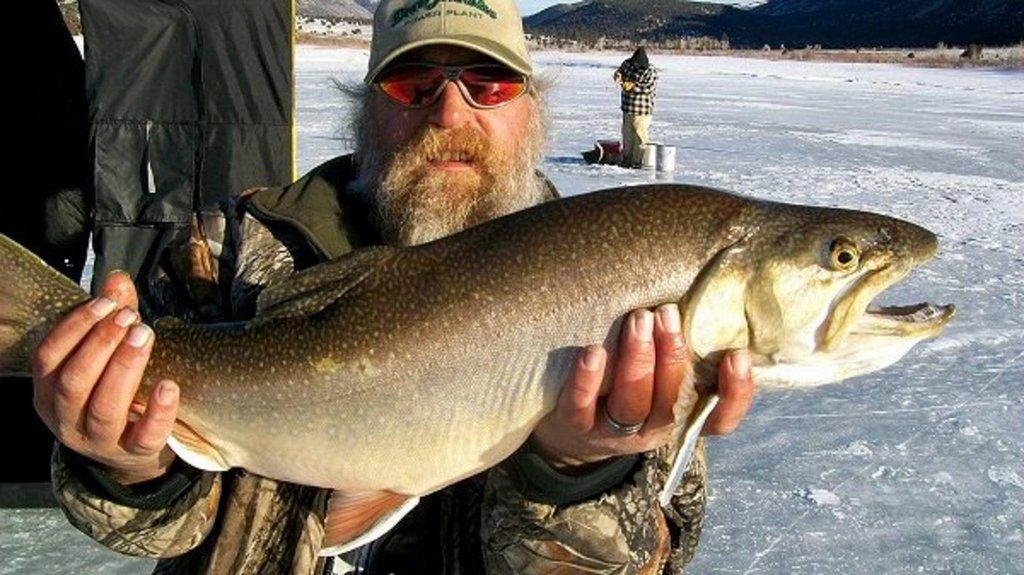Utah Division of Wildlife Resources Press Release
Don’t put the fishing gear away yet. It’s time for some of the best fishing of the year.
That’s right, those “crazy” people standing on ice at Utah lakes are not so crazy after all. They know a layer of cold ice means hot fishing in the water below.
“You can set your watch by it,” said Utah Division of Wildlife Resources warm water sport fisheries coordinator Drew Cushing. “When ice starts to form, the fish under the ice get very active. And they’re eager to bite.”
Luckily for anglers, the eagerness often continues through the winter.
Stay updated on where fishing is best in Utah this winter at www.wildlife.utah.gov/hotspots. Click on “fishing condition updates for the last seven days” to get updates.
Cushing says that ice helps anglers in several ways. First, if anglers are willing to walk, they can reach any part of the lake or reservoir they want to fish.
“Ice is the great equalizer,” Cushing stated. “In the winter, you don’t need a boat or a float tube to reach certain parts of a body of water. If you have a rod and a reel, and you’re willing to walk, you can reach any part of the water you want to fish.”
Catching fish in the winter does not require the skill needed to catch fish during other times of the year. Just drop the bait in front of the fish, and wait.
There is no need for a lot of expensive equipment. A short rod and reel, some hooks and sinkers, wax worms or meal worms, a digging bar or an ice auger and a large spoon or something to scoop ice chunks that form in the fishing hole, are all that’s needed to get started.
For anglers who like to fish with lures, include a few ice flies and small jigs in the tackle box. Cushing says chartreuse and red tend to be the best colors to use when fishing through ice.
Because two holes can be drilled close together, ice fishing is a great way to double the fun by fishing with two poles. Just make sure to have a two-pole permit before dropping the second line in the water.
In addition to catching fish, anglers can talk and socialize. Just drill the holes close together, and have fun. “Most ice anglers really look forward to the social side of ice fishing,” Cushing stated.
One thing that surprises many first-time ice anglers is how easy it is to drill a hole through the ice.
Cushing says that a hand auger will drill through six to eight inches of ice in about a minute. “It’ll take a little longer if using a digging bar, but not much longer,” he explained.
Digging bars cost between $5 and $10. Manual ice augers cost about $50.
Temperatures can be cold during ice-fishing season. But that does not mean anglers have to be cold. Stay warm simply by dressing for the conditions.
“Having a pair of waterproof boots will keep feet warm and dry,” Cushing advised. Insulated, waterproof boots tends to be the one piece of equipment anglers often forget.
Most anglers wait until the ice is at least four inches thick before walking on it. Keep in mind, ice is usually thinnest near the shore. Before walking out, Cushing suggests digging or drilling a test hole to see how thick the ice is. Additional holes may also be drilled periodically.
Ice cleats and ice spikes are two ice-related items anglers may want to consider buying. Ice cleats can be strapped to the bottom of boots. The cleats will give better traction on the ice.
Ice spikes are two short pieces of metal. They’re often attached by a short cord that can drape over the neck. Anyone who falls through the ice, will be able to jab the spikes into the top of the ice near the edge of the hole and pull themselves up.
DWR officials will continue to provide ice fishing tips and strategies in the coming weeks.


